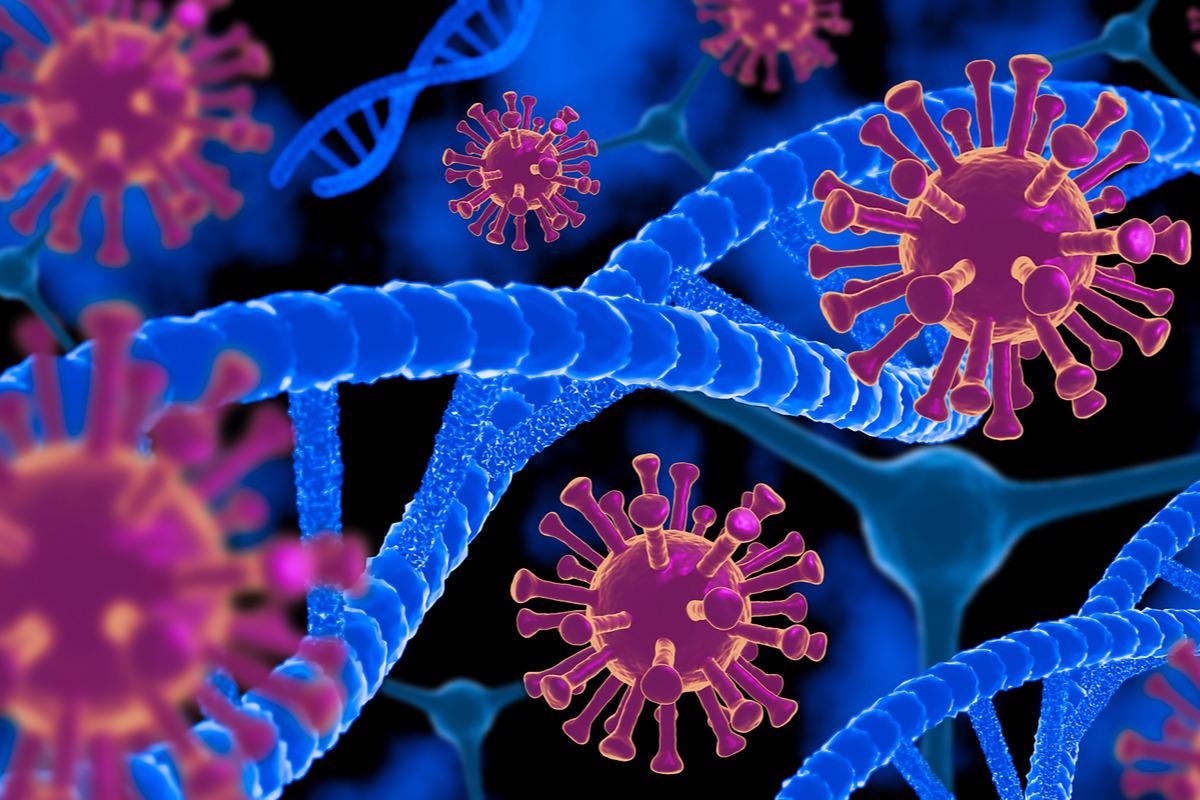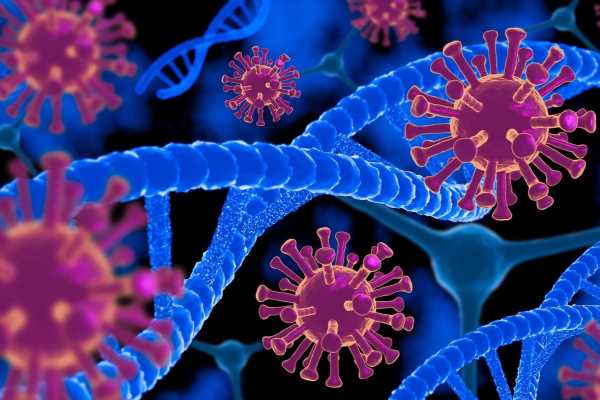In a recent study posted to the bioRxiv* preprint server, researchers reported on a three-layer designer deoxyribonucleic acid (DNA) nanostructure (DDN) strategy-based sensor designed by them for rapid and accurate severe acute respiratory syndrome coronavirus 2 (SARS-CoV-2) detection and inhibition.
The sensor comprised a net-shaped DDN and thus was referred to as a DNA Net in the study.

The existing breadth of coronavirus 2019 (COVID-19) tests largely comprises nucleic acid tests (NATs) and antigen-based tests. NATs require ribonucleic acid (RNA) extraction, reverse transcription, and amplification, along with expensive equipment and stringent laboratory procedures. Antigen-based tests have low sensitivity. Therefore, improved COVID-19 diagnostics are required for prompt and accurate SARS-CoV-2 detection with low cost and ease of use.
The authors of the present study previously designed a ‘DNA Star’ approach for developing a biosensor that targeted the envelope (E) protein clusters (ED3) situated on the outer surface of the dengue virus (DENV). While DENV has rigid surface antigens, coronaviruses have mobile roots and flexible stems, challenging pattern-matching for viral detection. Thus, the authors modified their previous strategy.
About the study
In the present study, researchers developed and demonstrated the applicability of the DNA Net sensor in the diagnosis of SARS-CoV-2 infections. The sensor was based on the DDN strategy and the viral capture and reading/inhibition (VCRi) approach.
Cryogenic electron microscopy (cryo-EM) was used to elucidate the trimeric S cluster of SARS-CoV-2. A net-shaped DNA nanostructure was used for recognizing and capturing intact SARS-CoV-2 virions with high affinity via multivalent interactions and spatial pattern-matching between the aptamers or apta, that targeted the receptor-binding domain (RBD) of the SARS-CoV-2 spike (S) protein of the wild type (WT) strain. The aptamers and the trimeric S proteins were present on the DNA Net and the outer surface of SARS-CoV-2, respectively.
The four thymidine (T)-long vertices of the sensor incorporated aptamers that targeted WT S RBD to form trimeric S clusters/ tri-aptamers), which mechanically matched to the spaces present in between the trimeric S protomers on the surface of SARS-CoV-2. The mobility of the SARS-CoV-2 S proteins on the outer surface of the virus enabled the dynamic formation of S clusters, yielding multiple sites of high-affinity attachments with densely packed S proteins. The sensing motif of the sensor comprised a fluorescin amide (FAM)- aptamer, which was quenched by a partially complementary lock DNA. Using a designer nano switch, the aptamers could release fluorescent signals upon SARS-CoV-2 binding which were easily read with the help of a hand-held fluorimeter.
Molecular dynamic (MD) simulations and docking analyses of the WT S RBD-targeting aptamers were performed for validation of the DDNA strategy for the detection of SARS-CoV-2.
Results
In the cryo-EM analysis, SARS-CoV-2 virions were 100 nm wide in diameter. The spacing between the DNA Net aptamers’ binding sites on the WT S RBDs of the trimer clusters in the down/closed conformation was 6 nm with slightly lesser spacing in the up/open conformation. The minimum distance between the adjacent S trimers without steric hindrances was found to be 14 to 15 nm. Therefore, a net-shaped scaffold of DNA aptamers was chosen for the sensor.
The nanostructure comprised of pattern-matched triangular spaces between the WT S-RBD-targeting aptamers and tri-aptamer clusters which measured 6 nm and 15 nm intra- and inter-trimer, respectively. Additionally, the 4×4 net size sensor was the most effective [half-maximal inhibitory concentration (IC50 ~11.8 nM)] with large inter-aptamer cluster spacing (52 bp DNA). The inter-vertices spacing of the DNA Net was 18.4 nm (center-to-center).
The interactions between SARS-CoV-2 and the sensor aptamers triggered the rapid release of multiple Lock DNA and unquenching of the FAM reporters even at low viral concentrations. This indicates that the DNA sensory was highly sensitive. In the experiments, the complex of sensor aptamers patched onto SARS-CoV-2 virions and blocked the S-ACE2 binding on the host cell surface. This is indicative of the high potency of the DNA Net sensor for SARS-CoV-2 inhibition.
In addition, the DNA Net-aptamers impeded WT SARS-CoV-2 infection in cell culture and the monomeric aptamer was enhanced by 1×103 folds. Further, the sensor’s design could also be customized to combat other life-threatening viruses such as human immunodeficiency virus (HIV) and influenza, whose surfaces possess trimeric forms of class-I viral envelope glycoproteins similar to those of SARS-CoV-2 S.
The MD simulations showed that one S RBD-targeting apta bound with an S protein protomer using several modes of binding with binding energies ranging between -10.3 and – 23.9 kJ/mol while the tri-aptamer cluster was bound to the S trimer with binding energies between -68.2 and -72.5 kJ/mol. In the sensor configuration with the highest binding energy, the inter -S distance between the interacting terminal regions of two S proteins of adjacent aptamers was 6.3 nm.
In addition, the aptamer ends that were bound with the DNA Net were spaced at a distance of 5.6 nm. On increasing this distance to 9.9 nm the binding energy between the S proteins and the aptamer clusters decreased.
Based on analyzing the root mean square deviations (RMSD) of the MD simulations, this binding arrangement varied slightly for the proteins. This indicated that the interactions between SARS-CoV-2 S and the aptamers were robust and stable.
Overall, the study findings demonstrated the utility of the DNA Net sensor for simple (mix-and-read), rapid (<10 minutes), sensitive [equivalent to a polymerase chain reaction (PCR)], inexpensive and room temperature detection of SARS-CoV-2. In addition, the DNA Net principle not only enhanced diagnostics but also could be used in anti-SARS-CoV-2 therapy.
*Important notice
bioRxiv publishes preliminary scientific reports that are not peer-reviewed and, therefore, should not be regarded as conclusive, guide clinical practice/health-related behavior, or treated as established information.
- Neha Chauhan Yanyu Xiong, Shaokang Ren, Abhisek Dwivedy, Nicholas Magazine, Lifeng Zhou, Xiaohe Lin, Tianyi Zhang, Brian T. Cunningham, Sherwood Yao, Weishan Huang, Xing Wang. (2022). Net-shaped DNA nanostructure designed for rapid/sensitive detection and potential inhibition of SARS-CoV-2 virus. bioRxiv. doi: https://doi.org/10.1101/2022.05.04.490692 https://www.biorxiv.org/content/10.1101/2022.05.04.490692v1
Posted in: Medical Science News | Medical Research News | Disease/Infection News
Tags: ACE2, Antigen, Aptamers, Biosensor, Cell, Cell Culture, Coronavirus, Coronavirus Disease COVID-19, covid-19, Diagnostics, DNA, Electron, Electron Microscopy, HIV, Immunodeficiency, Influenza, Laboratory, Microscopy, Nucleic Acid, Polymerase, Polymerase Chain Reaction, Protein, Receptor, Respiratory, Ribonucleic Acid, RNA, SARS, SARS-CoV-2, Severe Acute Respiratory, Severe Acute Respiratory Syndrome, Syndrome, Transcription, Virus

Written by
Pooja Toshniwal Paharia
Dr. based clinical-radiological diagnosis and management of oral lesions and conditions and associated maxillofacial disorders.
Source: Read Full Article
